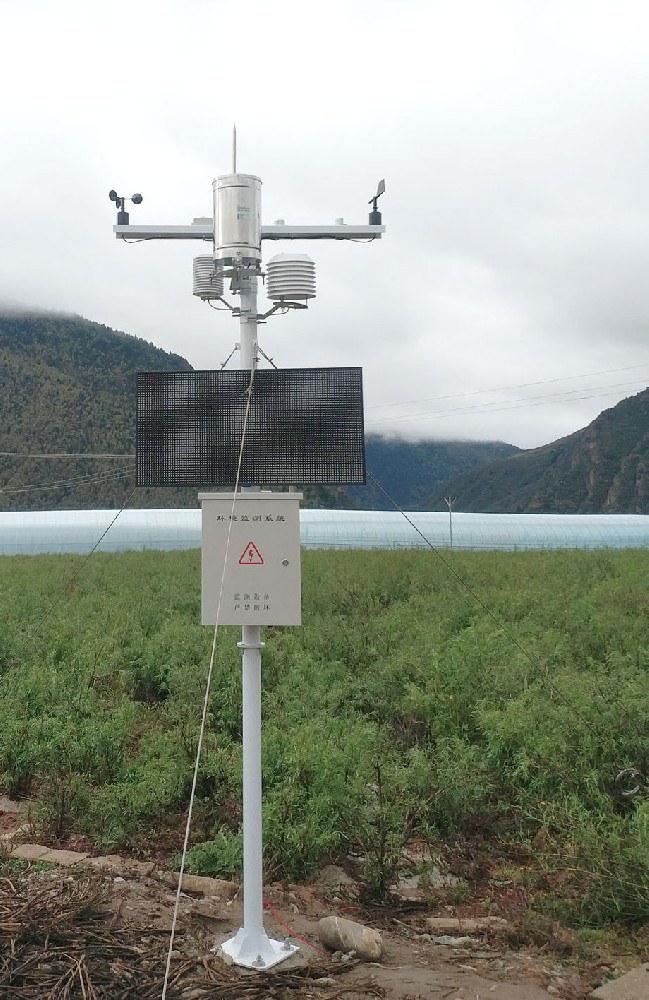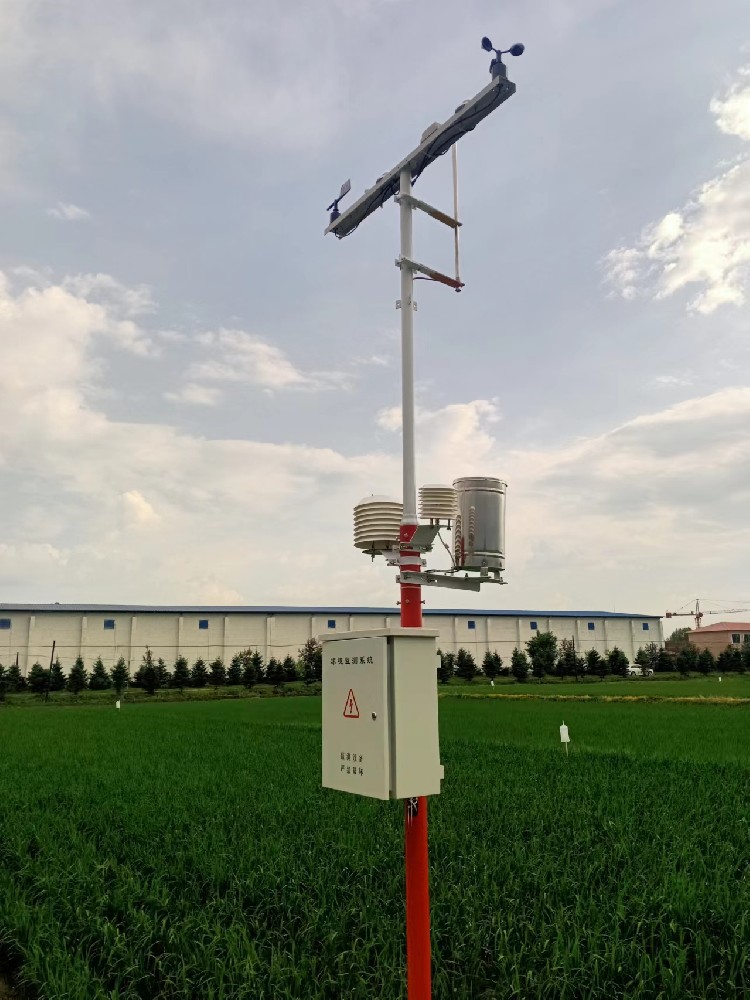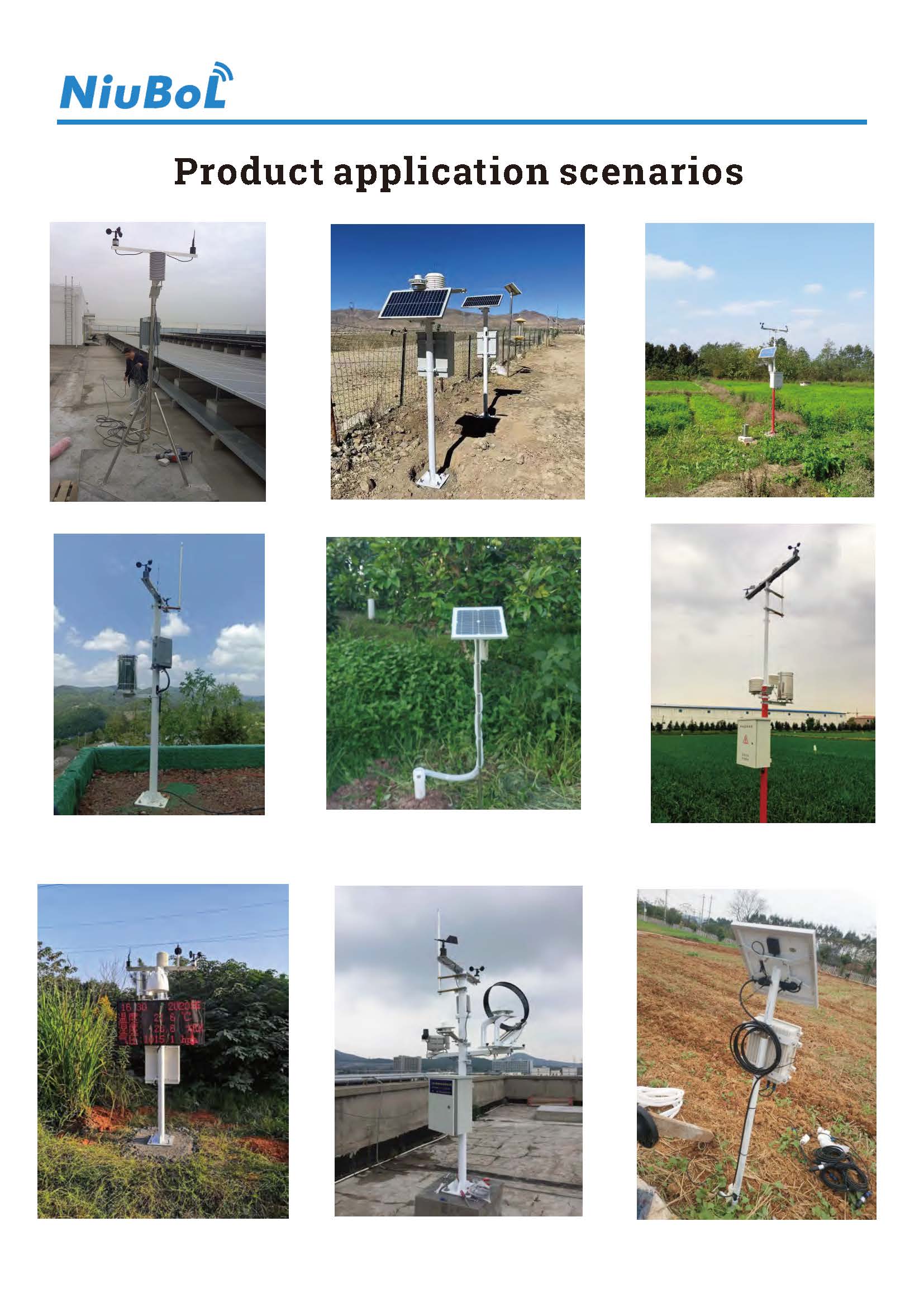

— Blogs —
—Products—
 Consumer hotline +8618073152920
Consumer hotline +8618073152920 WhatsApp:+8615367865107
Address:Room 102, District D, Houhu Industrial Park, Yuelu District, Changsha City, Hunan Province, China
Product knowledge
Time:2024-09-24 16:16:19 Popularity:1288
Micro weather station, also known as miniature weather station, is a kind of instrument and equipment used to monitor and record a variety of meteorological parameters. It usually consists of a set of sensors, a microprocessor, a data acquisition device, as well as a power supply system and a protective case, etc. It is capable of real-time monitoring and recording of meteorological elements such as temperature, humidity, barometric pressure, wind speed, wind direction, and rainfall. The following is a detailed introduction to the miniature weather station:
Miniature weather station is a compact, portable and easy to install and operate weather monitoring equipment, which can obtain and transmit weather data in real time through high-precision sensors and data processing systems, providing important data support for meteorological observation, environmental monitoring, agriculture, scientific research and other fields.
1. Portability: the miniature weather station is designed to be compact and lightweight, easy to carry and install, and can be conveniently deployed in outdoor, farmland, courtyard and other locations.
2. Low Power Consumption: Low power consumption sensors and data loggers are used to extend the service life and save energy, usually battery-powered or solar-powered.
3. Multi-functional: able to measure a variety of meteorological parameters, such as temperature, humidity, air pressure, wind speed, wind direction, rainfall, etc., and some also have solar radiation, soil moisture and other measurement functions.
4. Digitalization: adopting digital data recording and transmission system, which is convenient for data collation, analysis and transmission.
5. Real-time monitoring: with real-time monitoring function, it can display and report meteorological parameters in real time, and some of the products also have the alarm function, when the meteorological parameters exceed the predetermined value, it will automatically issue an alarm.
6. User-friendly: Usually with easy-to-use interface and operation methods, users can easily view and understand the weather data. Some products also provide mobile applications or cloud services so that users can view and manage weather data anytime and anywhere.
Miniature weather station is widely used in meteorological environment monitoring, environmental protection, airports, industry, agriculture, forestry, tourism, geology, hydrology and water conservancy, military, warehousing, scientific research and other fields. In agriculture, it can be used for farmland meteorological monitoring, irrigation decision-making, crop planting surveys, etc.; in meteorological observation, it can be used for the construction of meteorological stations, meteorological early warning, meteorological disaster prevention, etc.; in energy construction, it can be used for the monitoring of meteorological parameters of wind farms, solar power stations, etc.
In modern meteorological monitoring, the miniature weather station has become an indispensable tool with its portable and efficient features. However, its performance depends largely on the correct site selection and installation. In this article, we will discuss in depth the environmental requirements and specific steps that should be followed when installing a miniature weather station to ensure the accuracy of the data and the safety of the equipment.

1. Away from sources of pollution
In order to ensure the accuracy of the observation data of the miniature weather station, the observation site should be far away from the source of pollution. Electromagnetic wave pollution will affect the correct measurement of temperature and other elements, therefore, when selecting the site, try to stay away from facilities that may produce electromagnetic wave pollution, such as high-voltage lines, substations, etc.. At the same time, the shadow of obstacles and reflective objects will affect the measurement of solar radiation and sunshine hours, so these factors should be avoided around the observation site.
2. Surrounding environment
The surrounding environment of the miniature weather station has a great influence on the accuracy of data collection. If the surrounding buildings are too many and too high, it will affect the accuracy of wind speed measurement data. Therefore, when selecting the site, should try to ensure that the surrounding open, well ventilated.
3. Observation site requirements
Observation site should generally be 25m × 25m flat site, the site should be shallow grass paved, to maintain the natural state of the observation site. For high mountains, islands, unmanned stations and other special areas, according to the actual situation can be adjusted to the size of the observation site and terrain.
Although the possibility of lightning strikes on the miniature weather station is small, in order to ensure the safety of the equipment, it is recommended to install lightning rods. When installing the lightning rod, pay attention to the following points:
(1) Height of the lightning rod: In general, the height of the lightning rod should be no less than 3 meters.
(2) Grounding resistance: The grounding resistance of the lightning rod should be less than 10 ohms to ensure that the lightning current is smoothly channeled into the ground.
(3) Installation location: The lightning rod should be installed in the center of the observation site of the micro-weather station to ensure that the equipment is protected from lightning strikes.
(1) Equipment placement: Place the miniature weather station equipment in the center of the observation site and keep the equipment stable.
(2) Sensor Installation: Install all kinds of sensors in the designated position according to the equipment manual, such as temperature, humidity, wind speed and other sensors.
(3) Data transmission line: connect the sensors with the data collector to ensure smooth data transmission.
(4) Power supply: Provide stable power supply for the miniature weather station equipment, it is recommended to use solar panels for power supply.

The necessity of lightning rod: Although the probability of the miniature weather station experiencing a lightning strike is low, the installation of lightning rod is an important part of the preventive measures for the safety of the equipment. The lightning protection system should be designed in accordance with professional standards to ensure that the equipment is protected from damage during thunderstorms.
Precise Positioning and Layout: Before installation, the layout of the sensors should be planned in detail to ensure that each sensor can measure without interference from other factors. For example, wind speed and direction sensors should be located in the least obstructed position, while temperature and humidity sensors should be protected from direct sunlight to minimize measurement errors.
Ground Handling and Maintenance: Keeping the observation site clean and moderately covered with vegetation, avoiding waterlogging and over-hardening of the soil, will help to maintain a natural microclimate environment while facilitating routine maintenance and inspection of the equipment.

Summarize
Micro-weather station site selection and installation is a key link to ensure the accuracy of data collection. In the actual operation process, it is necessary to give full consideration to factors such as the environment and topography around the observation site, follow the installation requirements, and ensure the normal operation of the equipment. By following the above guiding principles, not only can the accuracy and reliability of meteorological data be ensured, but also the service life of the equipment can be extended, providing solid data support for many fields, such as agriculture, scientific research and disaster warning. During each installation, environmental factors should be carefully considered to maximize the effectiveness of the miniature weather station. Through the introduction of this article, I hope to help you in the miniature weather station site selection and installation.
Prev:Lightning Protection Tips for Weather Stations
Next:Analysis of the monitoring range of small weather stations
Related recommendations
Sensors & Weather Stations Catalog
Agriculture Sensors and Weather Stations Catalog-NiuBoL.pdf
Weather Stations Catalog-NiuBoL.pdf
Related products
 Combined air temperature and relative humidity sensor
Combined air temperature and relative humidity sensor Soil Moisture Temperature sensor for irrigation
Soil Moisture Temperature sensor for irrigation Soil pH sensor RS485 soil Testing instrument soil ph meter for agriculture
Soil pH sensor RS485 soil Testing instrument soil ph meter for agriculture Wind Speed sensor Output Modbus/RS485/Analog/0-5V/4-20mA
Wind Speed sensor Output Modbus/RS485/Analog/0-5V/4-20mA Tipping bucket rain gauge for weather monitoring auto rainfall sensor RS485/Outdoor/stainless steel
Tipping bucket rain gauge for weather monitoring auto rainfall sensor RS485/Outdoor/stainless steel Pyranometer Solar Radiation Sensor 4-20mA/RS485
Pyranometer Solar Radiation Sensor 4-20mA/RS485
Screenshot, WhatsApp to identify the QR code
WhatsApp number:+8615367865107
(Click on WhatsApp to copy and add friends)
